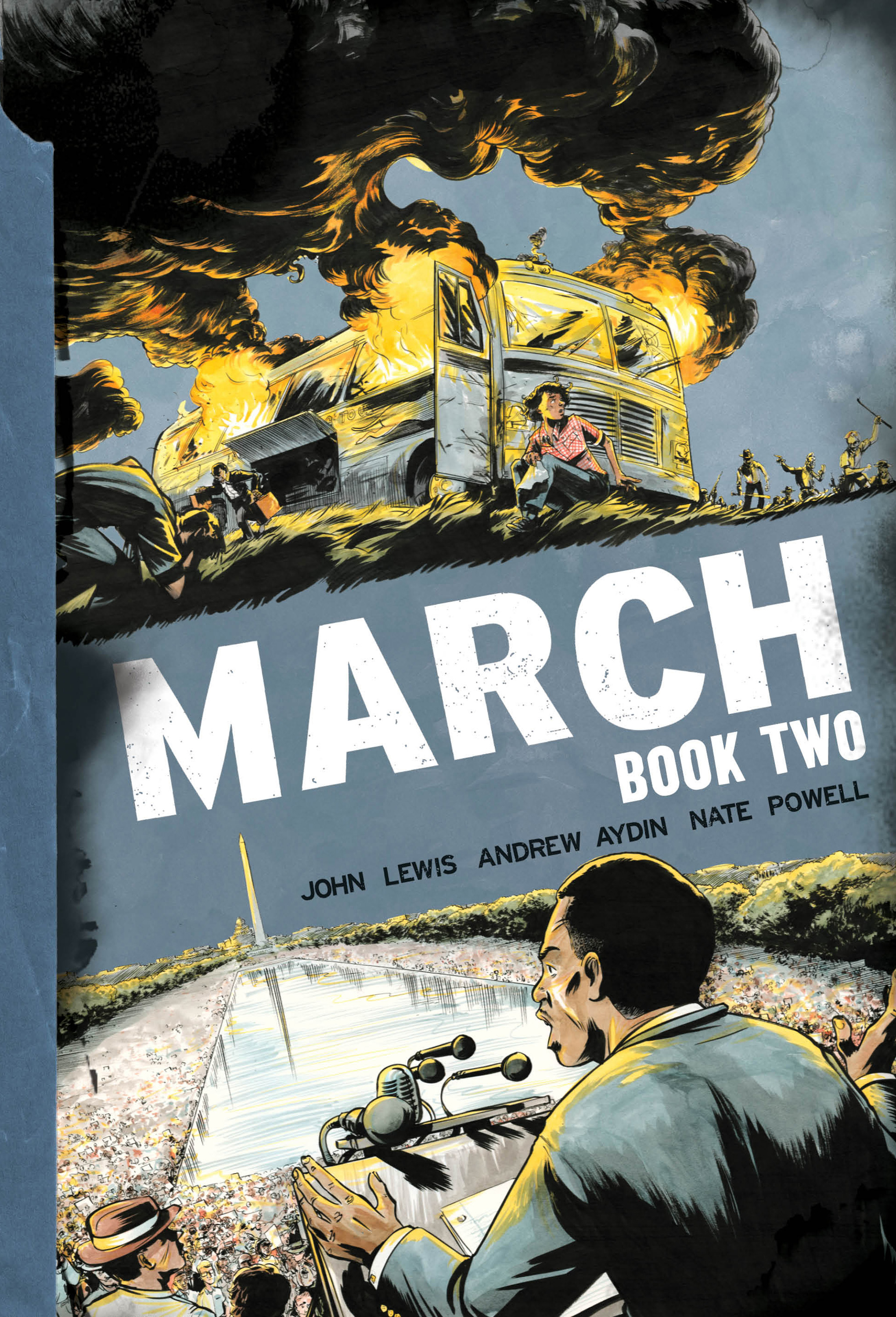I have noticed that not so many people have been commenting on the posts. That's no problem. I will continue to post for those of you who find some free time to read a little bit!
Here is the article that I found interesting this time!
----------------------------------------------------------------------------
Comic book is John Lewis’ civil rights-era teaching tool
By
WASHINGTON — “March: Book Two,” the second installment of the comic book version of Representative John Lewis’ odyssey during the civil rights movement, takes readers inside the days when he and his fellow nonviolent protesters faced a rising wave of violent attacks.
The 74-year-old Democratic congressman from Georgia said that when he turned the pages, it brought that historic era, from 1961 to 1963, when he was in his early 20s, right back: the beatings, bus bombing, dogs and fire hoses loosed on children.
“The drama of what happened, how it happened; it’s so moving to me and so powerful, and for me to look at some of the drawings, it almost makes me cry,” he said in an interview.
 The Rev. Martin Luther King Jr.’s father used to give his son preaching advice — “‘Make it plain, son, make it plain,’” Lewis said. “And I think ‘March: Book Two’ makes it plain and makes it possible for the young to understand, to feel it.”
The Rev. Martin Luther King Jr.’s father used to give his son preaching advice — “‘Make it plain, son, make it plain,’” Lewis said. “And I think ‘March: Book Two’ makes it plain and makes it possible for the young to understand, to feel it.”
Lewis’ latest account of that turbulent era comes amid renewed attention due to the film “Selma,” based on the civil right supporters’ famous and bloody efforts in 1965 to march from Selma, Alabama, to the state capital in Montgomery to seek equal voting rights. During the first attempt, Lewis was clubbed in the head, which the film depicts.
The best-selling “March: Book One” takes the first-person story of Lewis from his boyhood on his parents’ sharecropper farm in Alabama to his embrace of nonviolent resistance and lunch counter sit-ins.
The second book picks up in the fall of 1960, as the movement’s early gains lead to escalating brutal resistance. It covers the Freedom Rides and ends with the 1963 March on Washington — Lewis was one of six organizers, and is the only one still living — and the bombing of a church in Birmingham, Alabama, that killed four young girls.
Lewis, first elected to Congress in 1986, worked on the books with co-author Andrew Aydin, a legislative aide, and artist Nate Powell.
Hundreds of schools in 40 states have used the first “March” book. Aydin and Lewis know because they keep a tally of the places where they’ve heard from students and teachers. Georgia State, Marquette and Michigan State universities use the book in freshman reading programs.
It helps fill a gap, Aydin said.
“Unfortunately, the civil rights movement is barely taught at all,” he said. “And there’s virtually no education for the nonviolent philosophy or civil disobedience.”
The Southern Poverty Law Center, in a 2011 report, “Teaching the Movement,” found that 16 states didn’t require instruction about the movement, and in 19 others coverage was minimal, while most states failed to teach that era well.
Lewis and Aydin have been visiting schools and universities around the country.
After a grand jury decided not to indict the white police officer who shot and killed unarmed black youth Michael Brown in Ferguson, Missouri, last year, students in Louisiana created an organization modeled on the national student movement Lewis led, because they’d read about it in his first book installment, Aydin said.
He said he thought the book helped young people organizing for social change put their struggles in context.
“They could all benefit about understanding how nonviolent protests succeeded in the past in pressuring political leaders to act,” Aydin said.
The “March” books don’t varnish anything. Lewis nearly dies early in the latest installment when an angry restaurant owner, who refuses to serve him and his colleagues, locks them in the restaurant and turns on a fumigator.
Aydin got the idea for the book in 2008, when he worked as Lewis’ press secretary for his re-election campaign. One day staffers were talking about what beach they’d hit after the election. Aydin said he’d go to a comic book convention. People laughed.
“Don’t laugh,” Lewis put in. He told them that a comic book in the 1950s, “Martin Luther King and the Montgomery Story,” had inspired him when he was 17, growing up 50 miles from Montgomery.
Aydin asked Lewis why didn’t he write a comic book now.
“Asking an icon, a sitting congressman, to write a comic book. It was preposterous,” Aydin said. “But it was still a good idea.”
Both books flash-forward at times to 2009, when Lewis attended President Barack Obama’s first inauguration. Aydin said he was there working for Lewis that day, watching a moment in history that his boss and many others had helped make possible.
More needs to be done to shine a light on that era, he thought, and the comic book might be the way to do it.




























